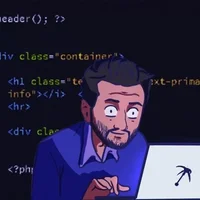
The outdated programming languages are being replaced by the mainstream and “new” ones. (Source – Shutterstock)
How today’s new programming languages are eclipsing the “dead”
- The rise and fall of programming languages is a constant in this evolving field.
- JavaScript, Python, Java, C#, and Rust are key players in modern programming.
Programming languages, much like spoken languages, have seen a rise and fall in their usage over time. The landscape of programming is dynamic, constantly evolving to meet the demands of the digital world. Despite the dominance of modern languages like JavaScript, Python, Java, C#, and emerging ones like Rust, it’s important not to overlook the so-called ‘dead’ or ‘dying’ languages that, despite being overshadowed, continue to hold relevance.
In the realm of programming languages, the term ‘dead’ is often used to describe languages that have fallen out of popular use. These languages are less likely to be used in new projects, learned by new programmers, or listed as requirements in job postings. They often see a decline in upkeep and updates, with their creators or online communities ceasing to maintain them over time. However, it’s worth noting that these languages rarely die out completely. Let’s explore some of these ‘dead’ or ‘dying’ languages below.
Top “dead” programming languages
COBOL (Common Business-Oriented Language)
Developed in the late 1950s and early 1960s, COBOL was designed for business data processing needs. It is known for its readability and strong governmental and financial systems use. Despite being considered “outdated” by some due to its lengthy nature and procedural programming model, it powers many legacy systems.
A large portion of the world’s active financial transactions are processed in COBOL. The number of new projects in COBOL is dwindling, and the developer community is not as vibrant as for other languages, creating a demand for programmers who can maintain existing COBOL systems.
Fortran
Fortran, short for Formula Translation, was developed by IBM in the 1950s for scientific and engineering computations. Known for its performance in numeric computation and array programming, Fortran is still used in numerical weather prediction, computational fluid dynamics, and computational physics.
While it’s not a common choice for new projects outside these fields, it maintains a solid user base in high-performance computing.
Pascal
Pascal was developed in the late 1960s and early 1970s to encourage good programming practices using structured and data structuring. It was widely used in academia for teaching computer science in the ’80s and ’90s. While Pascal itself has largely fallen out of use, its descendants, like Delphi, a language aimed at Windows application development, are still active.
Pascal’s influence can also be seen in some modern languages, like Swift, which adopted some of its syntax and conventions.

Pascal programming language executed. (Source – Shutterstock)
Visual Basic
Microsoft developed Visual Basic (VB), designed to be easily learnable for beginners with a graphical environment where developers could drag-and-drop components to build Windows applications. Older versions of Visual Basic (VB6 and earlier) have been declared legacy by Microsoft, but the language’s successor, VB.NET, is still in use as part of the Microsoft .NET framework.
Although it’s less popular than C# for .NET development, VB.NET maintains a niche within the developer community, particularly for in-house and enterprise applications in businesses heavily invested in Microsoft technologies.
Objective-C
Objective-C, developed in the 1980s, has been a significant language in Apple’s software ecosystem, playing a pivotal role in creating iOS-powered products. Its syntax has roots in the SmallTalk language. While it once appeared that Objective-C could secure a lasting place among the most influential programming languages, it has struggled to maintain its grip on the development market. Its dwindling popularity can be attributed to security concerns and an outdated structure.
Apple has shifted its focus towards Swift 14 for product development, which will likely render Objective-C obsolete in the coming years. Despite this, some iOS developers continue to use Objective-C, demonstrating its enduring accessibility. A crucial question for Apple developers now is the choice between Swift and Objective-C, which demands careful consideration.
Perl
Perl has had a successful stint in web development and network programming. However, its popularity has been diminishing. This is primarily due to its resource-intensive nature, hefty memory demands, and limited portability. Nevertheless, Perl still finds some use in web development and text processing.
But with more powerful and user-friendly languages like Python gaining ground, Perl faces stiff competition. It wouldn’t be surprising if Perl’s appeal fades even further in the coming years.
CoffeeScript
CoffeeScript quickly gained popularity due to its ability to compile JavaScript, enhancing readability and functionality. Other appealing features include assignment destruction, comprehension, and syntactic sugar borrowed from Haskell, Ruby, and Python, lending brevity to its structure.
However, between 2013 and 2018, CoffeeScript’s popularity waned, primarily due to its compilation process and changeability. Post-2018, this scripting language no longer holds the attention of programmers as it once did. Therefore, if you’re a developer considering a new skill, it might be time to move past CoffeeScript.

A Twitter user named, @morenoh149 commenting on the use of CoffeeScript. (Source – Twitter)
Haskell
Haskell, an older, statically typed general-purpose language, draws from other languages, including Clean, HOPE, and Miranda. It’s particularly suited for symbolic computations and finds application in research and industry. Its appeal lies in the brevity of its code, robust language principles, and high reliability.
Yet, despite these intriguing features, Haskell’s relevance has been diminishing. Its last stable release was nearly a decade ago, and its static typing, coupled with a steep learning curve, has failed to keep it high on the list of preferred programming languages.
The mainstream is taking over
Over time, programming languages have advanced to grapple with intricate challenges, ranging from creating basic data structures to implementing sophisticated algorithms. The journey has been marked by a shift from early languages such as Fortran and COBOL to contemporary ones like Python and JavaScript. As technology evolves, programmers are presented with a broad spectrum of languages.
Just watch the video below on the top programming language recommended to get a job:
In the ever-evolving panorama of programming languages, robustness, versatility, and broad adoption have allowed some languages to maintain consistent demand. As technology evolves, programmers are presented with a broad array of languages, each with its unique syntax and capabilities catering to different technological needs and industries. The journey has seen a shift from early languages such as Fortran and COBOL to contemporary ones like Python and JavaScript. Now, let’s look at some mainstream languages that have overshadowed the legacy ones:
JavaScript
Recognized as the cornerstone of web development, JavaScript has been a dominant force on GitHub since the 2010s, particularly regarding code volume. It is virtually the default language for web development. Irrespective of your experience level, mastering the basics of JavaScript is crucial.
JavaScript was initially developed to fulfill Mozilla’s urgent business requirements. It functioned in Java’s shadow for a long time, primarily used in front-end development. However, the introduction of Node.js in 2009 heralded a new era, bringing JavaScript into the backend development sphere.
The ascendency of client-side web development frameworks like Angular, React, and Vue further amplified JavaScript’s popularity.
Python
Despite its inception preceding JavaScript, Python maintained a low profile for a considerable duration. However, its elegant and simple syntax has always held a unique appeal. Over recent years, Python has witnessed a significant surge in popularity, attributed partly to Western universities favoring Python over more complex languages for beginner courses. Python enjoys extensive usage across multiple industries, notably in backend development, and is an excellent introductory language.
Since its inception, Python has emphasized simplicity and an optimal developer experience, making programming more accessible. Today, Python is the leading language in data science and engineering. Moreover, it consistently ranks among the top three languages in numerous other domains.
Java
Debuting in the 1990s, Java made a significant impression on the industry with its pioneering features. Despite JavaScript deriving elements from Java, it eventually outpaced it. Thanks to its enormous codebase and high demand, Java remains a reliable industry stalwart and a favorable choice for job seekers.
Java enjoyed an unrivaled popularity streak for a considerable period, largely due to its Virtual Machine: JVM, an exquisite feat of software engineering. However, Java’s appeal has seen a decline due to its stagnation and lack of innovation over the past decade, particularly in the face of the rising prominence of containerization and cloud computing.
C#
C#, introduced in the early 2000s, is a versatile language that gleaned inspiration from Java and then refined those elements for improved syntactic expressiveness. Microsoft’s hefty investment has molded C# into a powerful language, extensively employed in enterprise software and game development.

C# programming codes being executed. (Source – Giphy)
Microsoft’s recent contributions to the community have included numerous open-source projects, including C#. With ongoing innovation and reinvention, C# currently stands as one of the most widely accepted business programming languages.
Rust
While Rust hasn’t yet reached mainstream status, it holds the potential to become the ‘Esperanto’ of programming languages. It blends many features from existing languages, boasting the power and low-level access of C/C++, the safety of Python/Java, and the expressiveness and functional capabilities of Haskell/ML.
Though Rust competes with heavyweights like C and C++, it’s far from being a niche language. Tech giants like Microsoft, Google, Amazon, and Apple have started investing heavily in Rust, even though these companies traditionally prioritize their languages. This interest from significant players could significantly bolster Rust’s standing in the programming world.
It’s worth noting that even “dead” languages can have their uses. For example, maintaining legacy systems, understanding historical code, or learning about the evolution of programming paradigms and constructs. Furthermore, these “dead” languages often have influenced or given birth to other more modern and widely used languages.
READ MORE
- 3 Steps to Successfully Automate Copilot for Microsoft 365 Implementation
- Trustworthy AI – the Promise of Enterprise-Friendly Generative Machine Learning with Dell and NVIDIA
- Strategies for Democratizing GenAI
- The criticality of endpoint management in cybersecurity and operations
- Ethical AI: The renewed importance of safeguarding data and customer privacy in Generative AI applications


